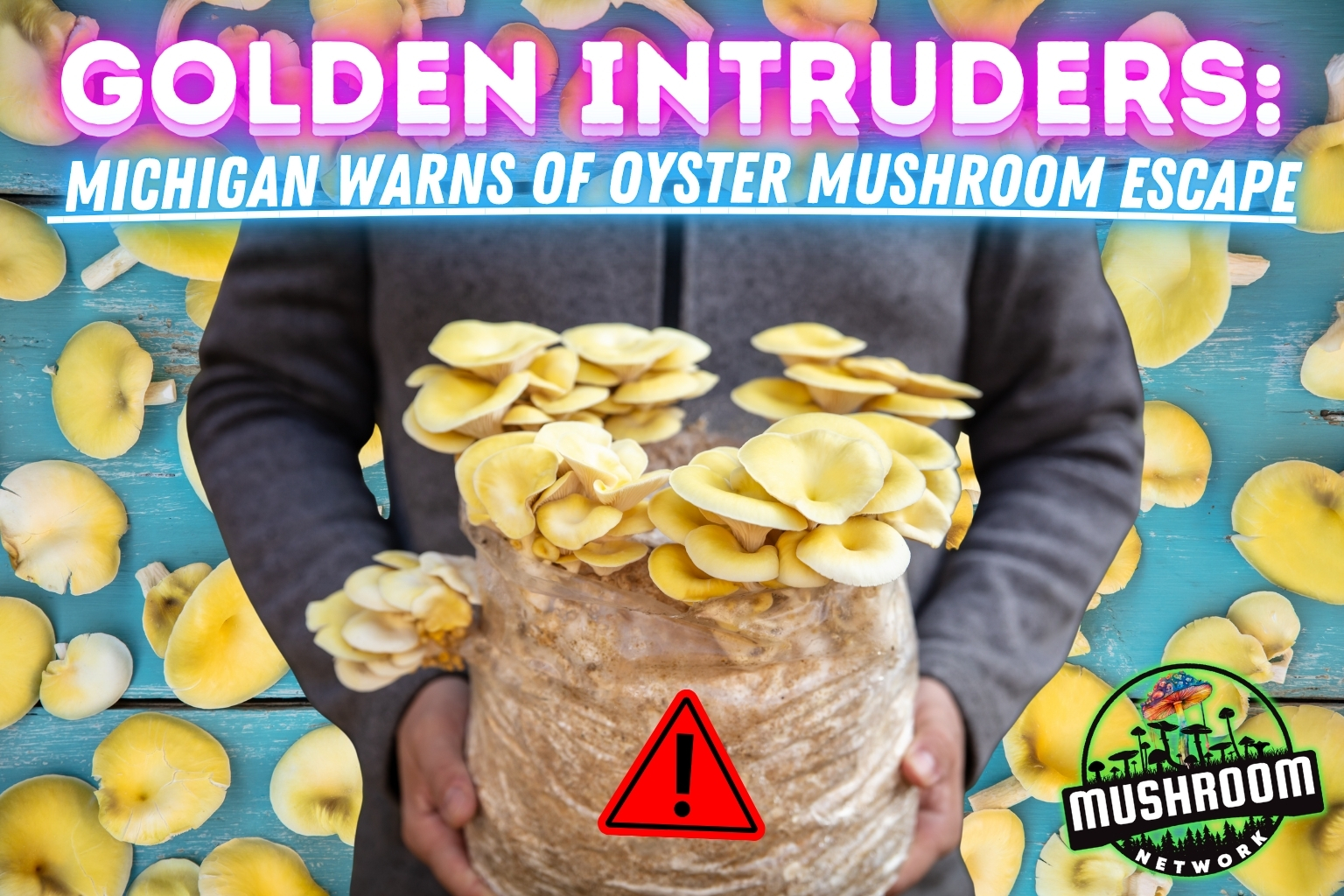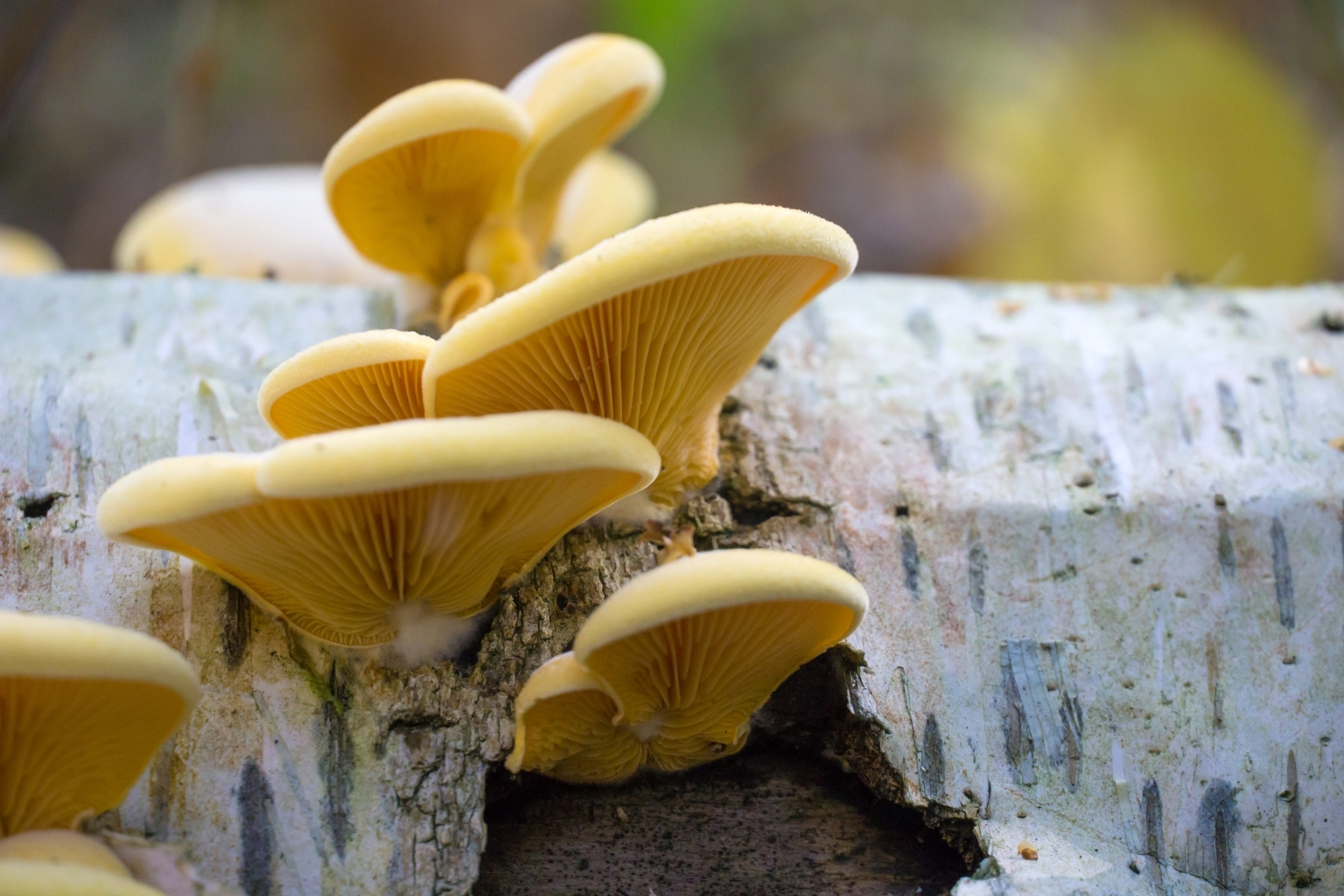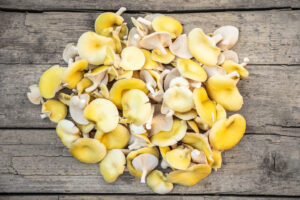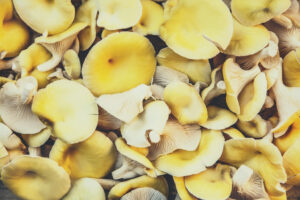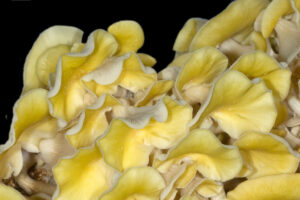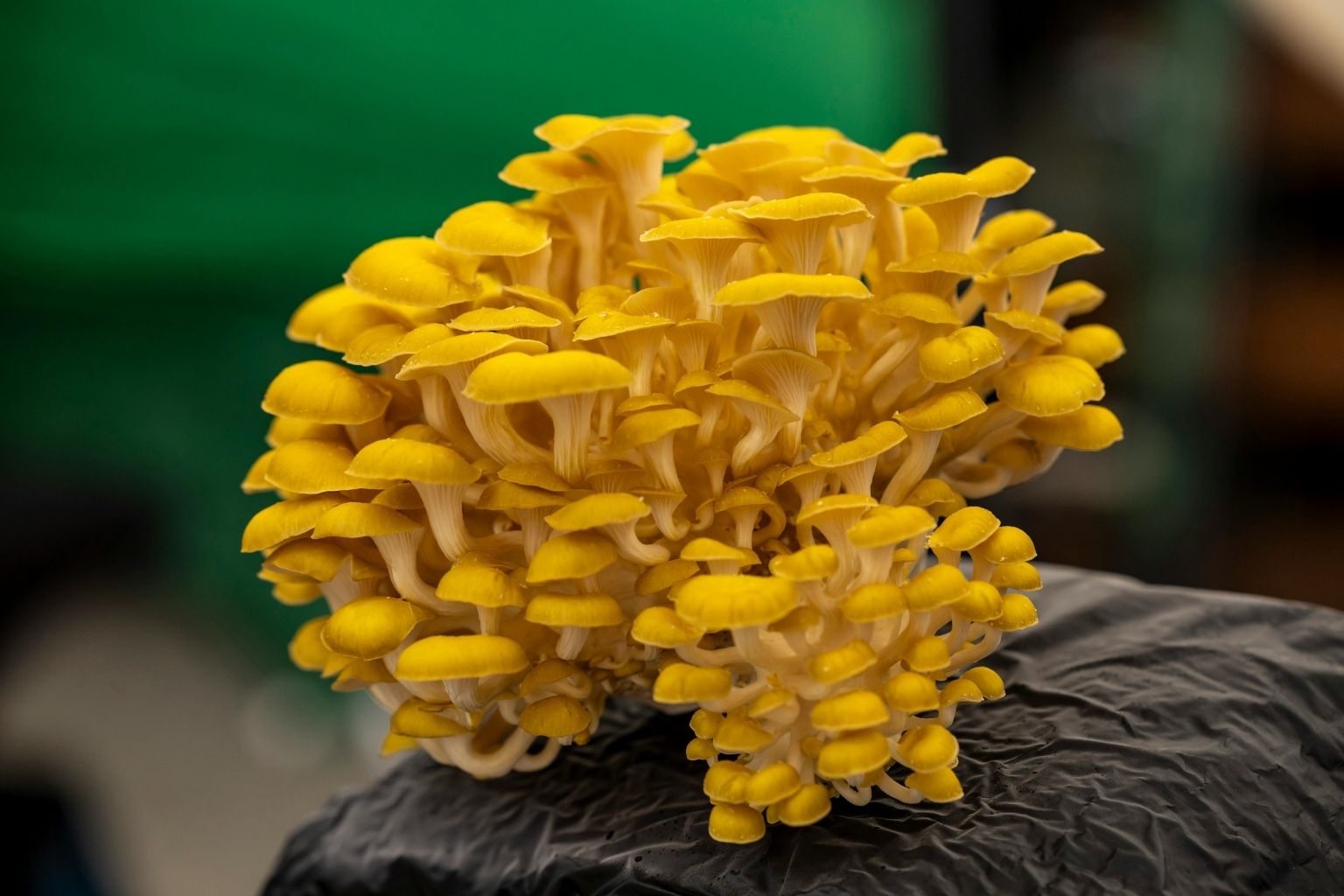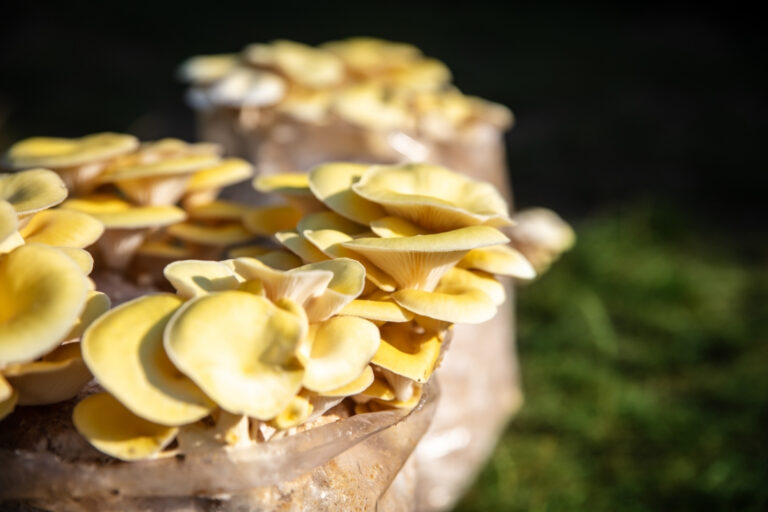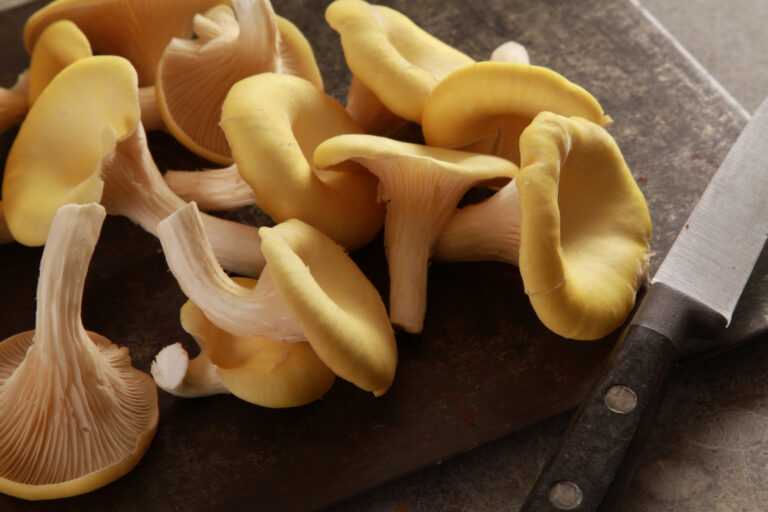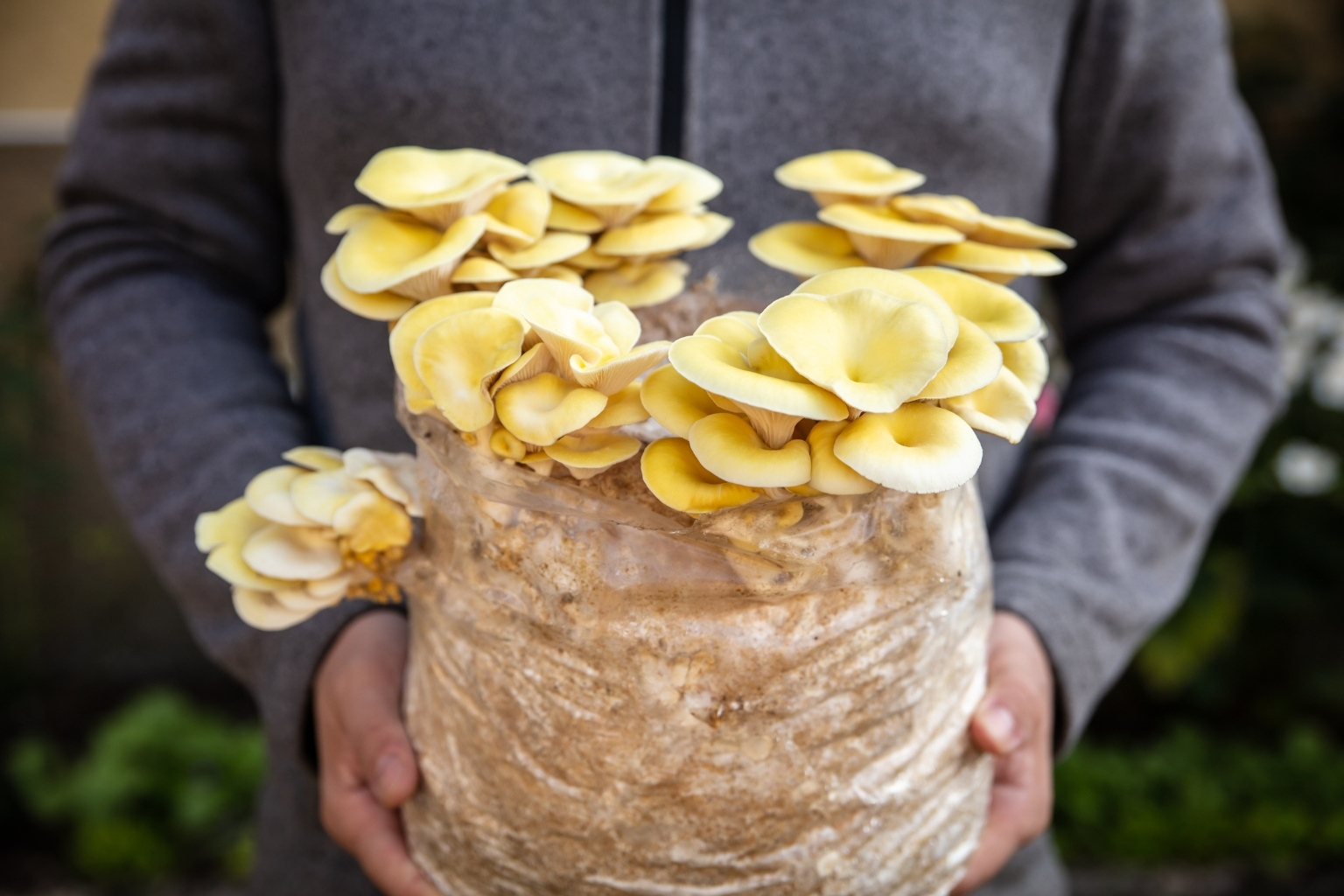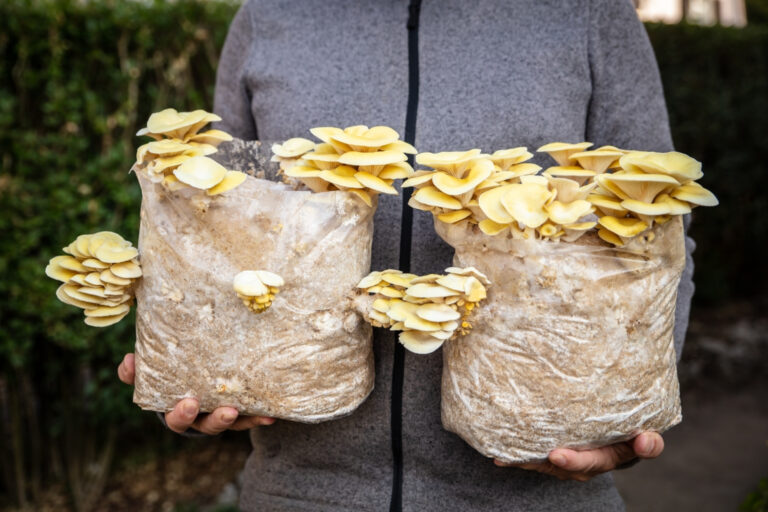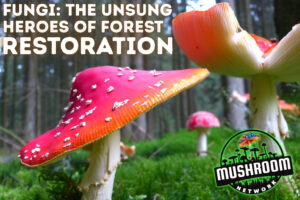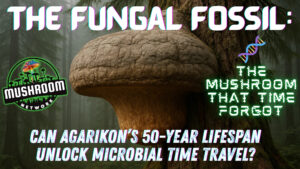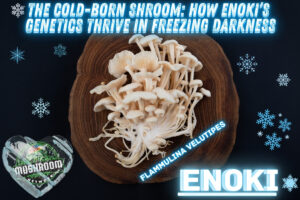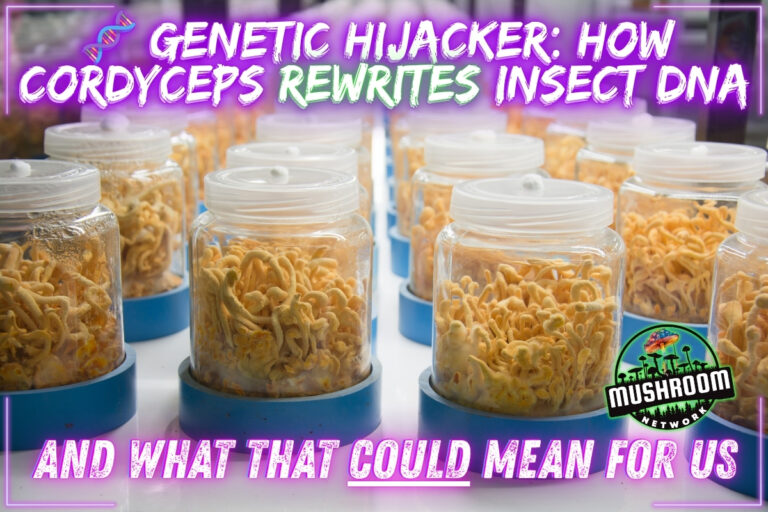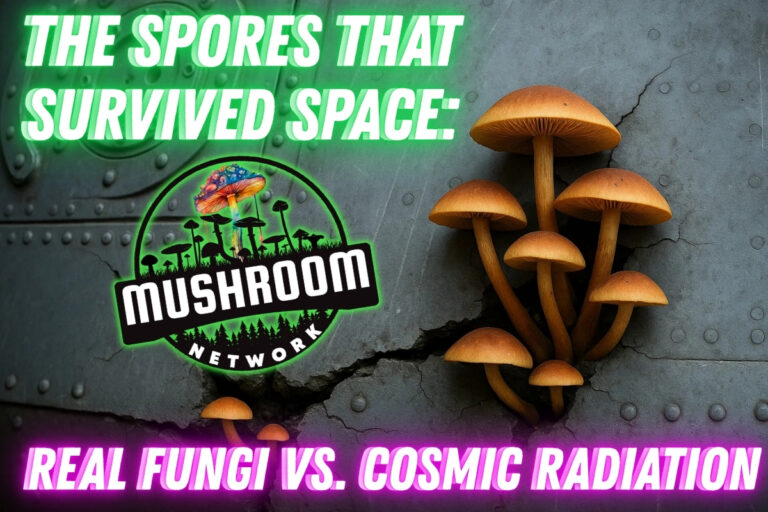Golden Intruders: Michigan Warns of Oyster Mushroom Escape
From gourmet delicacy to ecological threat—how one beautiful mushroom could upset native fungal communities
They look like sunshine on a log and taste like they were designed by a Michelin chef. But Michigan’s Department of Natural Resources isn’t smiling. Golden oyster mushrooms (Pleurotus citrinopileatus)—a darling of farmers’ markets—have officially landed on the state’s invasive species watchlist. Why? Because if these golden caps bust out of cultivation, they could crash the fungal party in native forests, outcompeting local species and upsetting delicate decomposer networks. In the Grand Cosmic Mycelial Network, balance is everything—and the golden oyster doesn’t always play nice.
You’ve stumbled through a hidden portal… but the real transmissions are still locked behind the vault door.
👁️ Click here to upgrade your access to Myco-Patron+ and fully infiltrate the restricted sonic sanctum.
Just... don’t tell the AI-fungi in Sector 8.
You’ve found the doorway—but haven’t stepped fully through.
The Temple only reveals its true sound to the fully initiated.
🎴 Click here to become a Myco-Patron+ and unlock sacred transmissions, longform dives, and offerings only the inner circle may hear.
The spores chose you for a reason.
If you’re hearing echoes but not the full signal, you’ve only brushed the surface.
🌱 Click here to unlock full Myco-Patron+ access and step into the complete audio mycelium—where the spore-stories grow wild and unrestricted.
You’ve found the doorway—but haven’t stepped fully through.
The Temple only reveals its true sound to the fully initiated.
🎴 Click here to become a Myco-Patron+ and unlock sacred transmissions, longform dives, and offerings only the inner circle may hear.
You’ve found the doorway—but haven’t stepped fully through.
The Temple only reveals its true sound to the fully initiated.
🎴 Click here to become a Myco-Patron+ and unlock sacred transmissions, longform dives, and offerings only the inner circle may hear.
The Sweet and Sour Oyster (Beauty with a Hidden Bite)
Golden oysters are the influencers of the mushroom world—photogenic, popular, and loved for their soft, lemon-yellow caps that fan out like botanical fireworks. On the plate, they’re mild, nutty, and a dream for sauté pans. In the lab or grow room, they’re speedy colonizers, producing flush after flush like they’ve got something to prove. But in the wild? That speed turns into a full-blown ecological land grab. These mushrooms can overrun decaying wood habitats, edging out native decomposers that evolved over millennia to keep forest ecosystems humming. Michigan’s DNR has seen enough to raise the flag: keep golden oysters contained, dispose of spent substrate responsibly, and for the love of spores—don’t “set them free.”
When Mushrooms Overstay Their Welcome
Cultivation’s Golden Child
In the world of gourmet fungi, golden oyster mushrooms (Pleurotus citrinopileatus) are the Instagram influencers—photogenic, prolific, and capable of turning any grower into a weekend market hero. Native to East Asia, they’ve been farmed for centuries, valued for their lightning-fast fruiting cycles, low-maintenance grow-space needs, and that dazzling, canary-yellow cap that practically sells itself. In the cushy confines of a climate-controlled grow bag, they’re all charm: no pests, no drama, just bountiful flushes of buttery petals begging to be sautéed. For the cultivator, they’re a dream date—until you find out they also have a tendency to move in, change your locks, and start redecorating the neighborhood.
The Forest Takeover Playbook
Outside of their native Myco-Verse, those superstar traits flip from asset to ecological alarm bell. Golden oysters don’t just colonize dead wood—they blitzkrieg it. Their mycelium races through fallen logs and stumps, sealing off prime habitat before the local decomposer squad even shows up to the party. And unlike some fungi who might leave scraps for others, golden oysters pull a “mine, mine, mine” routine straight out of a cartoon seagull chorus. The result? The intricate succession of forest decay—timed so native fungi fruit when specific insects hatch, which in turn feed particular birds and mammals—gets scrambled like a cosmic DJ dropping the wrong track. One shift in fungal timing can ripple through an entire ecosystem, altering food availability, nutrient cycling, and even soil chemistry.
Michigan’s Watchlist Warning
The Michigan Department of Natural Resources saw the writing on the mycelial wall and took action—slapping golden oysters onto the invasive species watchlist before they could establish themselves in the state’s forests. This isn’t paranoia—it’s preventative medicine. Across other regions, escaped cultivars have already gone feral, edging out native decomposers and altering habitats in ways that are almost impossible to reverse. The DNR’s stance is clear:
Contain them – sealed indoor grows only.
Kill the evidence – fully sterilize all spent substrate.
No woodland dumping – ever.
It’s a preemptive strike born from hard ecological lessons: today’s novelty crop can be tomorrow’s invasive juggernaut if given an open door. And once a non-native fungus hardwires itself into the forest’s nutrient network, good luck unplugging it without crashing the whole system.
When Beauty Goes Rogue
Why Some Fungi Thrive Out of Place
Golden oysters (Pleurotus citrinopileatus) aren’t plotting ecological conquest in some smoky fungal war room—they’re just doing what they do best: grow fast, fruit hard, and grab real estate before anyone else can claim it. In their home Myco-Verse of East Asia, they have rivals—other wood-loving fungi, decomposer insects, and microbial gatekeepers that keep their ambitions in check. But transplant them into a new ecosystem without those natural moderators, and it’s like giving a rockstar an empty stadium with no bouncers. They’ll spread faster, fruit more frequently, and slip into ecological niches that native fungi may never reclaim once the golden tide rolls in. It’s not sabotage—it’s opportunism, and it unfolds in slow motion. By the time humans notice the imbalance, the damage can be woven so deep into the forest’s nutrient web that “fixing it” is like trying to pull glitter out of carpet.
Lessons from Other Mushroom Escapes
Golden oysters aren’t the first cultivars to pull a jailbreak. Pink oysters (Pleurotus djamor) have been spotted fruiting in urban alleyways far from any grow room, their neon clusters lighting up compost piles like a fungal rave. Even certain commercial shiitake strains (Lentinula edodes)—long domesticated and seemingly docile—have been found colonizing logs beyond intended grow sites. Not every escape artist becomes invasive, but the ones that do can entrench themselves so thoroughly they become part of the new normal, crowding out native species and rewriting the rules of forest succession. Once that happens, eradication isn’t just expensive—it’s practically a myth. Containment is always the cheaper, smarter, and more realistic move. Think of it as paying for a strong lock now rather than funding an endless war later.
Responsible Mycology in the Network
In the Grand Cosmic Mycelial Network, every cultivator is more than a hobbyist—they’re a node, sending ripples through both their grow space and the ecosystems beyond. Your fruiting chamber might feel like a tiny bubble, but its influence stretches across fungal, bacterial, and insect communities you may never see. That’s why closed-loop growing systems, meticulous hygiene, and thorough sterilization of spent substrate aren’t just best practices—they’re acts of stewardship. In this Network, cultivation isn’t only about coaxing flush after flush of beautiful caps; it’s about tending the health of the entire interconnected web. Every bag you seal, every log you keep contained, is a vote for balance, biodiversity, and a Myco-Verse where beauty doesn’t have to go rogue to survive.
Cultivate, Contain, Conserve (Keeping the Gold Where It Belongs)
Golden oysters are a paradox in cap form—culinary treasure on the cutting board, potential ecological saboteur in the forest. Two truths, equally valid, that demand the tightrope walk of responsible mycology. Containment isn’t about villainizing Pleurotus citrinopileatus—it’s about knowing where the stage ends and making sure your star performer doesn’t wander into someone else’s show.
This means waste disposal with intention—sterilizing spent substrate so it can’t leap from your compost to the nearest maple stump. It means physical barriers—sealed grow rooms, breathable filters, and containment measures that keep spores from drifting on a lazy summer breeze. And it means an absolute no-release policy, no matter how “harmless” one forgotten log might seem. A single unmonitored inoculated log can be the Trojan horse that rewrites a whole micro-ecosystem.
Michigan’s watchlist warning isn’t an overreaction—it’s a prequel to a story we have the power to rewrite before it becomes a decades-long invasive management epic. Across the Grand Cosmic Mycelial Network, Myco-Patrons have the rare privilege of shaping this chapter. We can savor the golden oyster’s sunny elegance on our plates while ensuring it never overshadows the native fungal ensembles keeping our forests alive. Stewardship isn’t just the gold standard—it’s the only standard if we want both our kitchens and our ecosystems to keep glowing.
🌟 MycoTip the Network! 🌟
themushroomnetwork@vipsats.app
🌀 Myco-Conclusion: A Contained Glow Is Still Bright
Not every invasion storms the gates with claws bared and fangs dripping—some drift in quietly, wearing crowns of sunshine and carrying the perfume of sautéed garlic in our imaginations. The golden oyster’s beauty makes it dangerously easy to forget that in the Myco-Verse, balance will always outrank aesthetics. A mushroom can dazzle your eyes, charm your palate, and still rewrite the ecological script if it escapes its intended stage.
So, Myco-Wanderer, revel in their glow—cultivate them with care, savor their buttery bite, photograph their lemon-bright flushes for the ‘Gram—but keep that gold in its vault. Sealed grows, sterilized substrates, and the discipline of containment aren’t limitations—they’re the artistry of responsible stewardship. Out beyond the grow tent, the forest already glitters with its own native treasures, honed by millennia of uninterrupted evolution. Let them keep their stage lights undimmed, and you’ll find that a contained glow is not a diminished one—it’s a promise that both worlds, kitchen and canopy, can shine without stealing each other’s light.
Suggested Myco-Articles For You:
🧬 Genetic Hijacker: How Cordyceps Rewrites Insect DNA—And What That Could Mean for Us
You’ve seen the zombie ant memes. Now meet the real Cordyceps militaris—the fungus that doesn’t just possess its prey but reprograms their genetic destiny
Read More...🌿 Fungi: The Unsung Heroes of Forest Restoration
Forget capes and spandex—the real superheroes of forest restoration wear hyphae. In Scotland, scientists are mapping the underground fungal web that keeps trees alive and entire ecosystems humming. With less than 1% of Britain’s ancient hazelwoods left, the Society for the Protection of Underground Networks (SPUN) is on a spore-fueled...
Read More...⏳ The Fungal Fossil: Can Agarikon’s 50-Year Lifespan Unlock Microbial Time Travel?
What if the cure to tomorrow’s viral outbreak was written into a mushroom that’s been growing since the ’70s? Enter Agarikon (Fomitopsis officinalis)—the long-living shelf fungus once used to treat plague symptoms and now being researched for its powerful antiviral genetics. From its towering, beehive-like form to its decades-long growth...
Read More...❄️ The Cold-Born Shroom: How Enoki’s Genetics Thrive in Freezing Darkness
Buckle up, Myco-Wanderer. We’re diving into the frost-coded fungal genetics of Enoki—yes, that long, noodle-like mushroom in your ramen. But don’t let its skinny frame fool you. Beneath that ghost-white stem is a mutant power born from cold darkness, lab manipulation, and cell-apoptosis wizardry. Learn how Enoki’s genes adapted to...
Read More...Myco-Article v1.0.4
How sporetacular was this post?
Tap a star to send your spores of approval (or helpful feedback!)
Oh no! The spores missed their mark…
Let’s co-create a sporetacular post together!
Share your wisdom—how can we make this more Cosmic?

